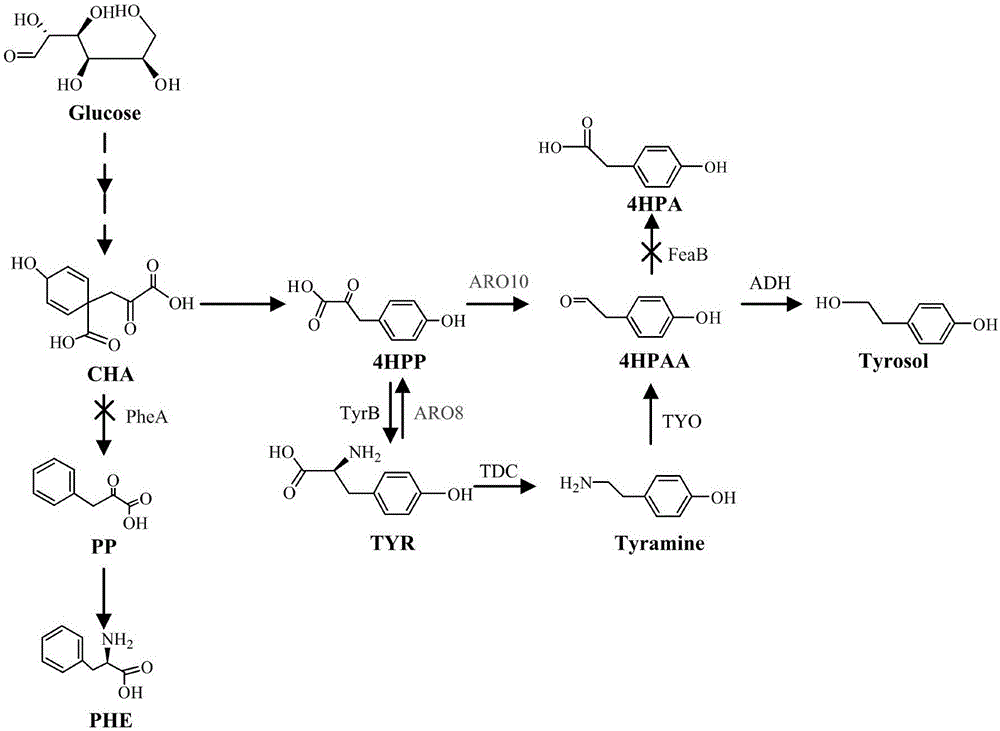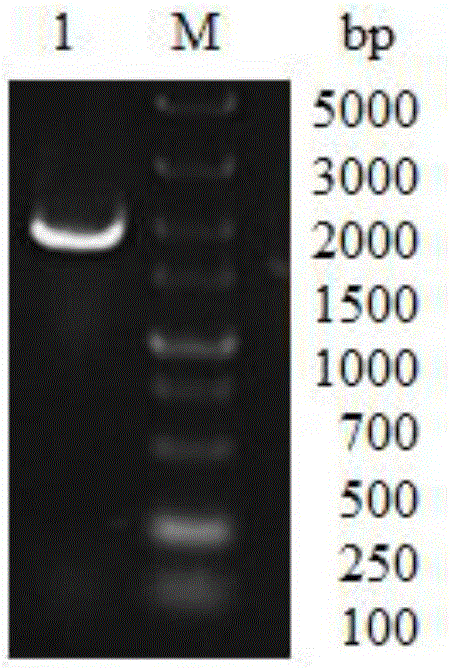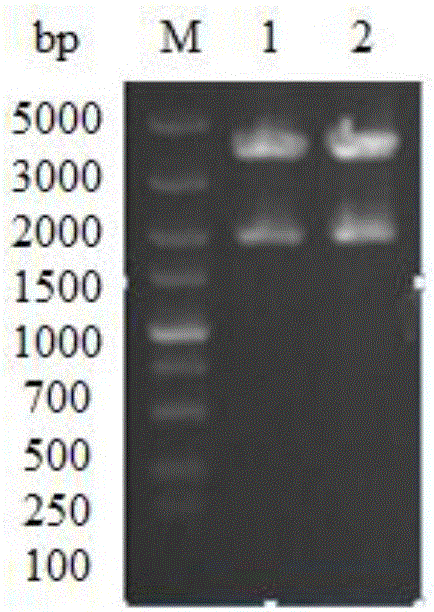Recombinant strain capable of producing tyrosol and construction method thereof
A technology for producing cheese and recombining vectors, applied in the field of microorganisms, can solve the problems of expensive raw material phenylethanol, restricting large-scale industrial production, low yield and the like
- Summary
- Abstract
- Description
- Claims
- Application Information
AI Technical Summary
Problems solved by technology
Method used
Image
Examples
Embodiment 1
[0028] 1. Construction of the recombinant plasmid pRSFDuet-ARO10 containing the gene encoding pyruvate decarboxylase
[0029] According to the reported nucleotide sequence of the coding gene ARO10 of Saccharomyces cerevisiae pyruvate decarboxylase (the GenBank number of the ARO10 gene sequence is 851987), the following primers were designed, and an NcoI restriction site (marked with an underline) was introduced into the upstream primer, A BamHI restriction site (underlined) was introduced into the downstream primer.
[0030] aro101: CATG CCATGG GCATGTCTGAAATTACTTTGGGT
[0031] aro102: GGCGCCGC GGATCC TATTTTTTATTTCTTTTA
[0032] The genomic DNA of Saccharomyces cerevisiae Eby100 was used as a template, and aro101 and aro102 were used as primers for PCR amplification. The obtained PCR product was subjected to 1% agarose gel electrophoresis, and the electrophoresis results were as follows: figure 2 As shown, a specific band of about 1908bp was obtained, and its size was c...
PUM
 Login to View More
Login to View More Abstract
Description
Claims
Application Information
 Login to View More
Login to View More - R&D
- Intellectual Property
- Life Sciences
- Materials
- Tech Scout
- Unparalleled Data Quality
- Higher Quality Content
- 60% Fewer Hallucinations
Browse by: Latest US Patents, China's latest patents, Technical Efficacy Thesaurus, Application Domain, Technology Topic, Popular Technical Reports.
© 2025 PatSnap. All rights reserved.Legal|Privacy policy|Modern Slavery Act Transparency Statement|Sitemap|About US| Contact US: help@patsnap.com



